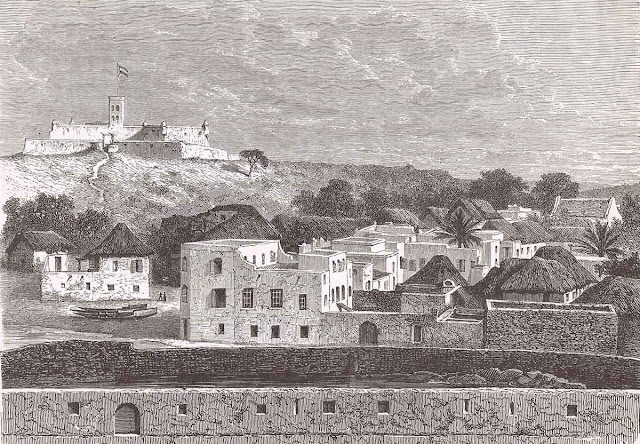Children without names
When we study Africans in the Netherlands in the seventeenth and eighteenth centuries, these individuals are denied their original African identity. This is of course also the case with Presto, whose African name, given to him by his parents, is unknown to us, and was possibly even unknown to Presto himself, as was his African family history. It makes looking for his origins in Ghana quite complicated.However, it also poses questions about the social status of African children like Presto in general. Were they chattel slaves, like the enslaved people that were sent to the plantations in the Americas? Or were they a special category of captives, and if so, how did this play out in the way in which they were procured in Africa and treated in Europe? Let's first look at their European position, and then move back to Ghana in a second instalment of this blog, and see what we can find there with regard to these young children. Also as another point of interest for the field trip.
African children in Europe: made-up identities
The research into Presto's / Christiaan van der Vegt's origins, his stinge at the Court of the Prince-Stadtholder, and as servant to the mayor of Weesp, Abraham d'Arrest, has yielded a large amount of information about other African boys in the Netherlands and Europe too. One rich source for our knowledge about these boys - and some girls - are the formal portrait paintings in which African children figure, usually in the background, as servants to 'important people.' Annemieke is collecting them on a special Pinterest Board, titled Young Africans with Europeans in the 17th and 18th century. And indeed, at the time of writing this blog, the board counts 412 pins already. |
| Portrait of Cocquamar Crenequie (Coll. Museum Weesp) |
We take the position that most, if not all of the seventeenth and eighteenth-century portraits, should be seen as real-life depictions in which all elements have meaning, and are part of the main figure's life. This includes servants, African or otherwise, pets, and inanimate ornaments and objects. Only by taking this position, it becomes possible to seriously study the prevalence of African child servants in Europe in the seventeenth and eighteenth centuries, no longer as something exceptional, but as a regular occurance. As Annemieke already stated: 'Christiaan was not the only one.'
And more importantly, by naming the African children in these pictures, we make a start in giving them their identity back.
To prove the point that efforts to identify these pictured anonymous African boy-servants can be fruitful, there is the case of Cocquamar Crenequie, or Willem Philip Frederik, as he was called after his christening. He was born on 'the Coast of Guinea', i.e. in West Africa, around 1739. Since the middle of 1750 he was a member of the household of the Count Gronsfeld, special envoy of the Dutch States General to the Court at Berlin. Cocquamar Crenequie was christened in Berlin on Sunday 27 January 1754. The reason we know all this is that his christening was reported in a Dutch newspaper, which report coincides with our knowledge about the provenance of a painting of the same year in which he was pictured with the Countess zu Löwenstein-Wertheim-Virneburg, Gronsfeld's wife.
 |
| Report on the christening of Cocquamar Crenequie in Berlin, in Opregte Haerlemsche Courant 5 February 1754 |
From the Netherlands to West Africa
So far, we have a fair idea of the scope of these African boys living in Europe in higher-placed servile positions, through their appearance in paintings, and because of selected case studies from archival sources. That does not mean that the picture is complete yet, however, or that we fully understand the social positions of these boys and the social mechanisms governing their position and status, including Presto. This is a research topic in itself, which should be undertaken with some urgency.During our trip, Annemieke and I will look into the context of the Atlantic slave trade and the position of enslaved people for that trade on the one hand, and into the physical and social context in which children were procured for service in the Netherlands on the other.
An important issue to consider is how the procurement of these children in Africa worked. The premise here is that the children brought directly to Europe cannot, in social terms, be compared to the huge numbers of chattel slaves shipped 'in bulk' - excuse the expression - and anonimity to the Americas. In the case of these children, one can ask whether their was some sort of 'parallel trade', considering the numbers found in Europe, or whether it was a more incidental occurance with its own rules and regulations?
In the next blog I will go into that more in detail, on the basis of several recorded cases from the era in which Presto and Fortuin were also brought from the Coast of Guinea to the Netherlands.





